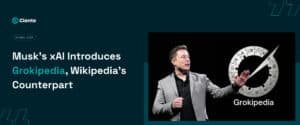Qualification of leads is probably one of the most overrated topics marketing has ever had to deal with. And it is wildly important. Yet, when agencies speak of qualification, it’s just BANT or some variant of it.
That is a gross simplification of the entire process, and it is possibly one of the highest reasons why MQLs are losing their value. And the MQL might be replaced by the HQL.
There isn’t a set definition of the HQL, and there’s a good reason for it because it’s not normalized outside of marketing circles. You ask a CFO about an MQL or an SQL, and she would have a good idea of what they are. However, when you, as a marketing leader, go to your CFO and tell them about HQLs, they will say: –
“Huh? Are there more of these?”
Marketers try to derive meaning through these qualifications to drive and explain ROI. That MQLs yield X ROI, while SQLs yield Y ROI.
And their values are different.
MQLs are based on basic criteria like intent and scoring.
While SQLs are highly engaged and are way down in the funnel.
But then what are these HQLs? What’s the value that a highly qualified lead holds? It feels like the middle child between MQLs and SQLs, another arbitrary qualification system that yields more or less the same results.
Qualification can be so much more, but agencies treat MQLs, SQLs, and even these HQLs like data to be handed off. There’s scoring and intent involved, but who decides these? Unfortunately, some agency models don’t bother to actually qualify- they package the leads as they see fit and charge their buyers.
A broken model.
One that is eroding trust from every layer of the b2b sphere. But this trust is what has driven business. If it erodes, partners and agencies will be in trouble, and in-house teams will do everything in their power to do this stage in-house.
And that’s something the HQL can stand against. The real meaning behind the HQL can’t just mean highly-qualified leads, but rather highly-qualified leads that drive trust.
This piece will convince you of that.
The definition of the HQL (Highly-Qualified Leads)
The Need for the HQL
A highly qualified lead does not evoke any image. At least MQLs and SQLs are concrete; there’s a process, and they are adopted by organizations as a norm.
HQL does not have that luxury, yet it offers a better way of qualification. But each organization defines it differently. For some, a highly qualified lead is someone who has received your syndication program and signed up for future updates, and so on and so forth.
Or the basics, qualifying through BANT.
This definition assumes that people who give you this information really know or care about what your organization and brand do. Downloading eBooks, whitepapers, and attending webinars does not mean prospects are qualified. Why? Because of the vast amount of information that people are consuming.
Do you remember the last eBook you read? Or which brand wrote it?
Let that stir.
The other question is: if you do remember, would you want to be considered a qualified lead?
This gives you all the answers you need.
But what if you were qualified using multiple methods, including nurturing? Now that would stick. If you were offered value packaged in interesting ways and showed that a brand cared about what you care about, you would be more interested in what they had to offer.
That is what an HQL should be.
What is an HQL?
By this definition, an HQL is a segment of leads that have been: –
- Nurtured
- Interact with your content periodically
- Show interest in your brand and analogous solutions.
- Respond to your campaigns positively.
This surpasses the old definitions of download → lead packaging → hand-off.
And the qualification is designed to build trust. It isn’t a new way of doing things but a change in how lead generation is approached. It goes from data-based to people-first, something that marketing has been about.
Why might MQLs and SQLs not be relevant going into the future?
MQLs and SQLs are not the problem. It’s the way they are packaged, and unfortunately, processes define what an object is. The object and its objectives become irrelevant.
A lot of agencies deliver MQLs that are not vetted and provide little value. They erode brand trust and maybe only work in the short term, which is good for the agency and bad for the organization buying them.
SQLs are better, but they face the same issues- the process is not what it should be.
And because of this constant misuse of the two, big organizations have started moving away from them. The talk of quality has become consistent. Lead tracking has become a thing.
But above all, the brand has become a moat. And the HQL is the metric that will become the tracking system of this moat.
The Qualification System of the HQL
The codification of the qualification system is not an easy task. It involves an abstract process related to marketing.
It is based on trust.
And constant exposure of the brand and its practices. The few questions that arise when speaking of the qualification of the HQL are: –
- What is the value for the consumer?
- What grabs their attention?
- Vitally, what builds trust?
There are many questions that need to be answered, but these three provide a base that will empower you to address more as they come.
And as you can see, they are the basis of all marketing. These concepts arise because timeless principles are being used to combat inauthenticity.
So, how does one qualify an HQL?
The Steps to Qualify HQLs
What is the scariest aspect of being a marketer? What is the core definition of campaign failure?
It’s indifferent to the core audience.
Failure is:
- Indifference of the audience.
- No impact on revenue.
And marketers solved this problem by either creating beautiful campaigns, which worked, or using marketing tactics that strong-armed the consumer. It was either or. That means, you either were interesting or made revenue.
Some, like Apple and Salesforce, found a middle ground. But they had what few companies do- a huge marketing budget.
So let’s assume that the term, do more with less is the modern marketing mantra. The qualification must:-
- Not create indifference
- Create trust in the process.
- Have tangible revenue impact
- Do more with less.
Step 0: Branding
Any organization, whether sales-led or product-led, needs branding to differentiate. You must align with a principle and philosophy, which is created through your process. Or you can just co-opt one, but that is never great for long-term sustainability.
Step 1: Creating value
Let’s begin with the basics: value creation. Your eBooks, whitepapers, emails, and everything else that is part of a lead gen strategy want to create value around what you’re selling, whether that’s the service or the product. ****
But imagine, similar solutions to yours exist, and your competitors have the same data as you do. They are creating similar content. Unless you’re competing on price or place, things are going to be toe-to-toe. That is, if your product is very similar to theirs. If yours is the superior choice, positioning will take care of everything else.
But creating value is not exclusive to media agencies and Hollywood-esque talent. Value, in marketing, is crafted by diverse opinions and risk-taking. Yes, it’s that simple in theory.
The equation for differentiation and value creation is something like this: Audience data + Diverse Opinions + Experimentation + Creative Risk-Taking = tasteful value.
This equation guarantees aesthetics, positioning, and audience resonance. And this is the reason why multivariate testing works so well. It shows what works and what doesn’t on a large audience.
Step 2: Building Trust
This is the core of the qualification process. No, this is the qualification process. So let’s get technical here.
First, you use a multichannel approach. Ads, emails, socials, etc. By this point, you must have defined your audience and found what resonates within your audience base.
But the question remains: why should they trust you? This involves adopting the game theory principle of reciprocal altruism. Essentially, if you give to your consumers, they will feel obliged to return to you with value.
For example, imagine this: a SaaS founder sends you a handwritten note and gives you a token of appreciation. She does this because she wants to genuinely understand your problem and solve it. And that’s what you perceive.
You will write to her on LinkedIn or Instagram- whichever channel you prefer.
This has built trust, and you will be more eager to sit with her and discuss business. This is missing from the current qualification practices: trust-building. And it requires marketers to move from digital practices to concrete forms of meeting the customer.
Step 3: Collation of Data
By the end of step 2, you should have a pool of engaged and nurtured audience. Look at Slidebean, their CEO runs YouTube, and the content he and his team deliver is genuinely worth checking out.
What’s the difference between them and some other company? They capitalized on the charisma of their founder and built a channel that consistently gives value.
It worked because that was natural. Just go to the channel and see the engagement. Their lead gen pipeline must be insane.
Of course, you can assign scores here. But we bet that won’t be necessary because you will get engaged enquiries, which should be the ideal goal.
Why does a business need the HQL?
There is a hidden message in this piece. If you caught it by now, you are probably feeling the same disconnect that many marketers do.
The steps, the equations, and the systematization of marketing have eroded trust. While data does help create better messages and codify the behavior of the buyers. It is human connection that drives deals.
That’s why thought leadership has become so vital. The personal brand is a direct reflection of this. And even though AI is a fantastic tool in all senses of the word. It reinforces the fact that human connection is vital.
Think of this: imagine a brand ranks on Google all the time. Every time you Google, say cloud solutions, or use GPTs, you see this brand. And you think, oh, they must be good.
And you go to their page and find it reductive, repetitive, and the product is absolutely not what you expected. This does happen, does it not? That’s why you trust Forrester, McKinsey, Gartner, HBR, because you can trust their messages and that they will provide the right direction for your specific problem.
This is what you must do to generate HQLs. And businesses need it today more than ever.





